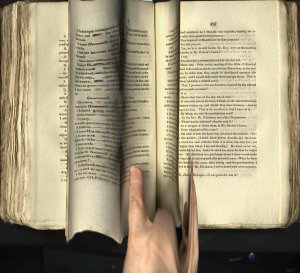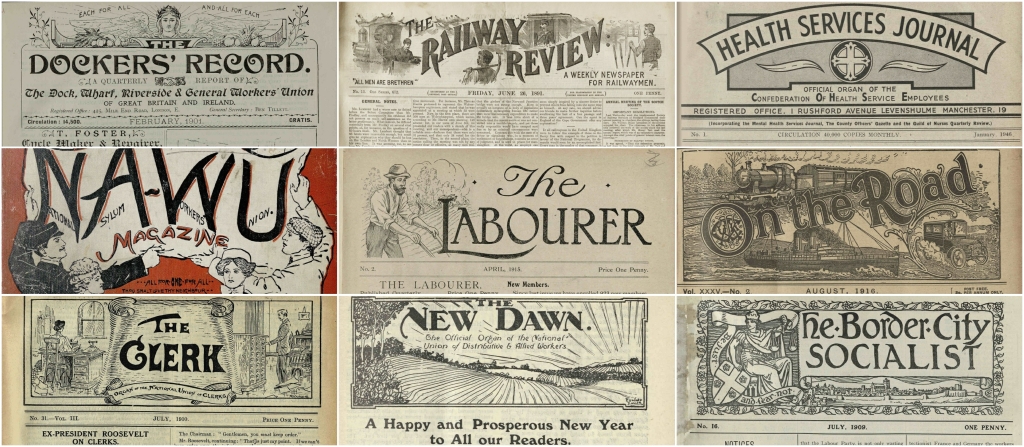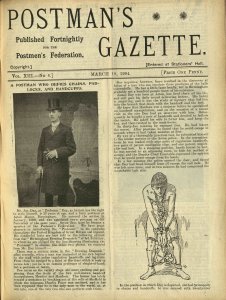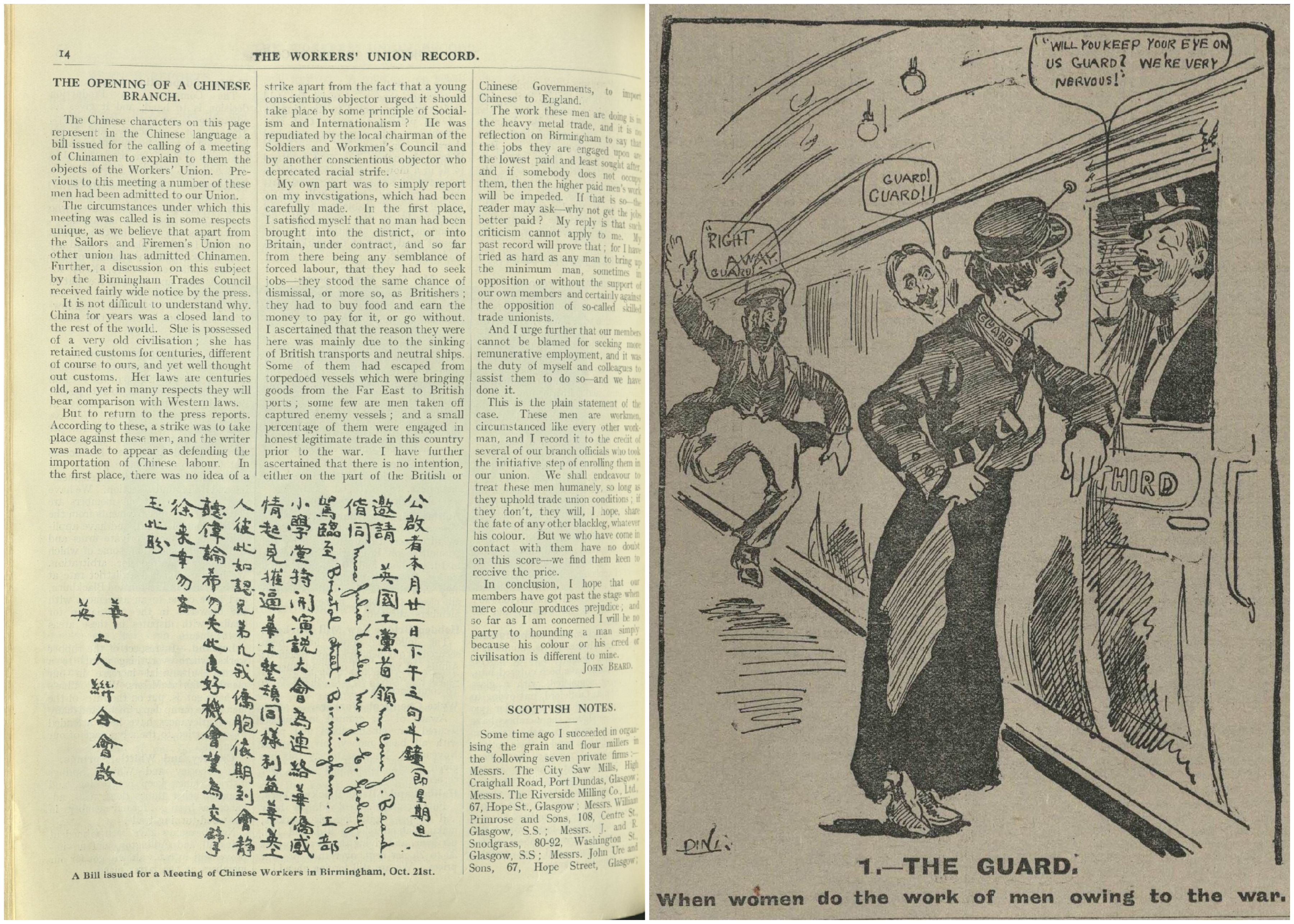Since shifting its approach on digitisation to make as many union journals as possible available online, the Modern Records Centre has managed to scan a vast quantity of material and make it available free of charge to researchers, as Liz Wood explains.
After two years of steady scanning, the Modern Records Centre at the University of Warwick has hit the milestone of 100,000 pages of trade union journals digitised and made available online for free. Go direct to the MRC.

Lockdown shifted our perspectives on digitisation. The MRC’s previous projects had been slow and thorough affairs – full-text transcripts were provided for every page and were manually, individually proofread and corrected so that the whole thing could be searched accurately for key words. When we were finally able get back into the office and start scanning again, the priority had shifted to speed and quantity – making more resources available (copyright permitting) to people unable to travel, and sacrificing the more accessible text-backed versions for a much larger quantity of scanned images. In 2020 we asked (through Twitter) what researchers would like us to digitise. The reply came back – ‘runs of journals’ – so we began work on some of the titles and subject areas specifically asked for and then continued to scan our way through the volumes of trade union periodicals.
So what have we put on the scanner bed so far? Journals digitised at time of writing include titles dedicated to:
- Agricultural workers (The Labourer, 1915-18, and The Land Worker, 1915-1950)
- Railway workers (Railway Review, 1880-1892, 1907-1920, The Railway Express, 1890-1892; Railway Herald, 1896-1901, and The Railway Clerk, 1904, 1908-1918)
- Merchant seamen (The Seaman, 1908, 1912-1946, and The International Seafarer, 1923-1930)
- Travelling sales reps (On The Road, 1883-1920)
- Postal workers (Postman’s Gazette, 1895-1918, and The Postal Mentor, 1902)
- Local government employees (The Municipal Officer, 1911-20, and Public Employees Journal, 1929-1936)
- Dockers (The Dockers Record, 1901-1914)
- Boot and shoemakers (Monthly Reports, 1877-1886)
- Asylum workers (NAWU Magazine, 1912-1929, and The Asylum News, 1906)
- Printers (The Printer, 1843-1845, and Typographical Circular, 1874-1879)
- Health service employees (Health Services Journal, 1946-1950)
- Poor Law officials (Poor Law Gazette, 1923-1930)
- Clerical staff (The Clerk, 1908-1912, 1916-1931, 1938-1939)
- Scottish building and monumental workers (The Building and Monumental Workers’ Trade Journal, 1924-1935, 1939-1941)
- Warehouse workers and co-op employees (New Dawn, 1921-1922, 1924-1928)
- Foundry workers (Monthly Report and Journal, 1920-1923)
- Clothiers (Clothiers Operatives’ Monthly Gazette, 1898-1900)
- Transport and general workers (The Record, 1921-1931)
- Engineering and shipbuilding draughtsmen (The Draughtsman, 1918-1920)
Our editions of the Labour Church magazine The Labour Prophet, 1892-1897, have also been scanned together with a small number of local labour publications for York (1904-1906), Carlisle (1908-1910) and the Clyde (1916). All of our back editions of Firefighter between 1932-2001 had already been made available as part of a larger scale digitisation project, partly funded by the FBU to mark the union’s centenary in 2018.

The content and structure of the union journals varied. Some were purely functional – pictureless reports of meetings, lists of branch officials and local accounts. Others were more informal, perhaps intended to attract new members as well as to inform the old ones, and included photos, cartoons, poems and jokes, along with snappy news items and topical articles from high-profile labour movement authors. Finding an appropriate balance between entertainment and information could sometimes cause tension within the union. The early editions of the National Asylum Workers’ Union’s NAWU Magazine are filled with cartoons, fancy letter headings, serialised stories and a full-page map showing the location of branches. After a year and a half of this, the union’s Executive Committee wrestled control of the journal from the editor Rev. H.M.S. Bankart as production costs were outrunning the finances of the young union. Two angrily competing editions were issued in June 1913 and then the journal settled down into economically viable but less vibrant production.

Glimpses of the lives of individual members can be seen in many of the journals, from passing mentions when they received benefits or spoke at branch meetings, to illustrated full-page profiles which summarised individuals’ work, activism and personal interests (the escapologist postman from Birmingham who, in 1904, “LAUGHS AT IRON BONDS” being a particular highlight for me). During the First World War studio portraits of uniformed young men appear in many of the journals, initially marking members’ enlistment then, as war dragged on, memorialising their deaths.
The union journals reflect and report on the broader society and politics of the period. The personal effect of rising costs of living can be seen, for example, through a letter from a labourer’s wife, detailing her family’s weekly expenses. Problems relating to welfare and housing are reflected in articles and correspondence, including reports on the transition to a National Health Service and the abolition of the poor law. Changing perceptions of the role of women can be seen through ‘women’s columns’ and articles and cartoons about the novelty of women in the workplace (Railway Review, in particular, goes to town on this). Working class views on empire and Britain’s perceived place in the world come through in different ways, from the National Sailors’ and Firemen’s Union’s explicitly racist campaigns against Chinese, German and South Asian workers to the Workers’ Union’s 1917 appeal for members to go ‘past the stage when mere colour produces prejudice’, whilst reproducing a leaflet aimed at Chinese metal workers in Birmingham.

Over the past two years we’ve produced more than 100,000 pages of free content for researchers but have still barely scratched the surface in terms of providing online access to the material stored in our strongrooms. What is currently available gives a great snapshot of British social, political, economic and labour history, but we want to continue to build on this foundation. If you have any particular themes or specific titles that you’re keen to have covered (ideally pre-1950), contact us and we can hopefully work to make those available too.
Liz Wood is Assistant Archivist, Modern Records Centre (email: archives@warwick.ac.uk).
Explore the MRC’s digitised collections (including the labour movement newspapers and journals).